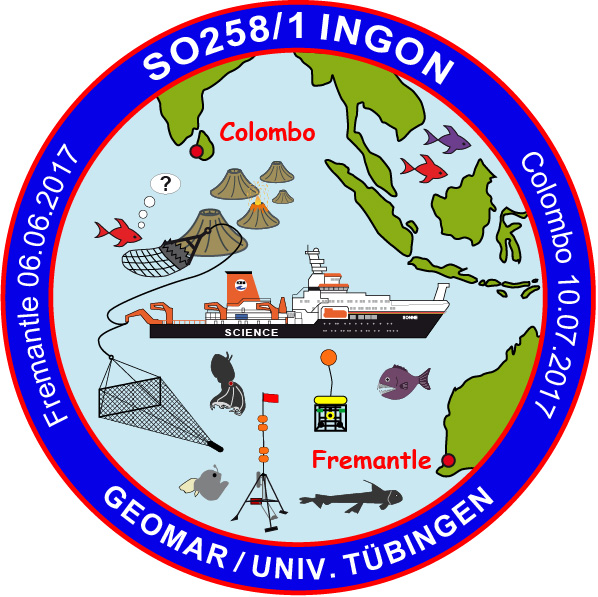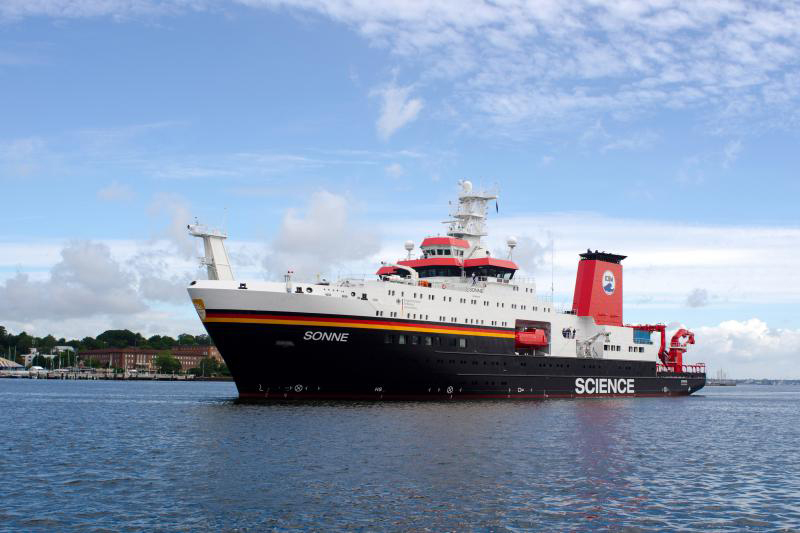SONNE SO258/1
- Area:
- Indian Ocean
- Time:
-
07.06.2017 - 09.07.2017
- Institution:
- GEOMAR
- Chief scientist:
- Reinhard Werner

In order to improve our fundamental understanding of how the earth system works, we need more in depth knowledge of the mechanisms involved in the break-up of continents and which magmatic processes take place in the earth’s mantle. Many questions remain concerning the Indian/Sri Lanka separation from Antarctica during the break-up of Gondwana. When was the initiation of the breakup? Was it triggered by a hotspot (mantle plume), which generated the Rajmahal Trap basalts (plume head) and 85°E ridge (plume tail), one of in total three prominent basement ridges in the Indian Ocean? Did the extremely rapid northward motion of India begin shortly after the breakup of Gondwana or instead at ~67 Ma triggered by a different process? Published kinematic models vary by more than 30 m.y. and therefore the related magmatic processes are unknown. To date, only a single locality along the 85°E Ridge (Afanasy Nikitin) has been sampled, but no age data is available and its origin is unclear. The samples from Afanasy Nikitin, however, show the most continental-like isotopic ratios of any rocks analyzed from the ocean basins thus far. The origin of this geochemical anomaly, however, is still unclear. Thus, the major goal of SO-258 Leg 1 INGON is to answer these questions by geochronological and geochemical studies of the 85°E Ridge. These investigations will be continued on SO258 Leg 2 by complementary geophysical (seismic, magnetic, gravity) studies by the Alfred Wegener Institute Helmholtz Centre for Polar and Marine Research.
A second focus of the cruise is on the investigation of the ability of deep-sea marine organisms to produce light by the University of Tübingen and cooperation partners. This bioluminescence is much different from the general, scenic illumination resulting from sunlight and therefore has led to the evolution of special adaptations in the visual systems, and the eyes in particular. The eyes of mesopelagic cephalopods, crustaceans and teleosts will be studied to investigate their morphological and physiological adaptations and specializations for the perception of bioluminescence. In fish, traditional concepts of the function of tubular eyes will be tested in conjunction with the role of optical devices such as mirrors, optical folds, lens pads and diverticula. These projects with a phylogenetic perspective will be supplemented by molecular-genetic studies in order to clarify the cladistics relationships between the various species. Novel electrophysiological experiments will directly demonstrate the motion and intensity sensitivity, as well as the spatial resolution, of mesopelagic visual systems in fish and crustaceans, parameters that have previously only been indirectly inferred from morphological observations. Finally, autonomous floater and lander systems will be deployed to study the mesopelagic and demersal fauna in situ. This part of the Indian Ocean has not previously been studied in this respect.



